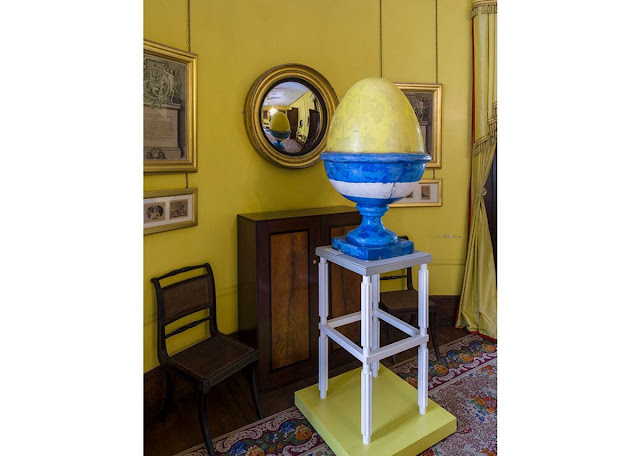I’ve been reading a rather good book titled A Spy’s London, by Roy Berkeley. It’s a sort of travel book and walking guide, complete with maps, that allows you to wander around London and see where various spies lived, and where various acts of espionage were planned or committed. Chelsea is full of them, it seems.
There’s 111, Old Church Street where the SIS trained refugees from Estonia, Latvia and Lithuania, and turned them into secret agents. There’s the flat in Drayton Gardens where Kim Philby lived with his mother. And there’s the home of Ian Fleming in Carlyle Mansions, Cheyne Walk.
 |
| Authors just love to pose as though they're reading their own books. |
Berkeley, like many before him, is skeptical about the extent of Fleming’s work as a spy, and calls him an intelligence wannabe. Fleming moved into Carlyle Mansions in 1952, taking his gold typewriter with him, bought specially to finish Casino Royale.
Fleming’s flat was some floors above TS Eliot who, as I understand it, was living there at the time, at number 19, in an austere room, its walls bare except for a crucifix, and Eliot himself was living immediately beneath a flat where Henry James had lived.
If the internet is to be believed, number 19 was subsequently the place where the serial killer Patrick Mackay murdered an elderly widow named Isabella Griffiths in 1974. ("There will be time to murder and create")
A more optimistic confluence has it that in 1958 Raymond Chandler was living very close to Cheyne Walk, in Swan Walk. He was in desperate straits, grieving for his late wife, drinking too much, and working on his last, unfinished, and doomed Marlowe novel, Poodle Springs. It seems that Fleming lived in a considerably better building, but Chandler was only staying for one summer.
I think it’s unlikely that Chandler and Fleming ever walked to each other’s flat. I did, of course, and then back again. On the way I passed a door to The London Sketch Club,
and I walked by Clover Mews, “This is a PRIVATE Mews”
Frankly, it didn’t feel much like Bond territory, and understandably it felt even less like Marlowe territory.
But Chandler and Fleming did have at least one encounter, not in the street while walking, but in a broadcast they did together on BBC radio in 1958 – Chandler was 70, Fleming 50 - and Fleming adopts the position of the junior partner, very wise given than Chandler (who of course I love more than life itself) sounds in the broadcast to be a bit of cantankerous old
Fleming: I see they had another killing last week in New York. One of these men connected with that dock union man—what’s his name?
Chandler: Albert Anastasia?
Fleming: Anastasia, yes. How’s a killing like that arranged?
Chandler: Very simply. You want me to describe how it’s done?
Fleming: Yes, yes.
Chandler: ... So they go to where the man lives, and they get an apartment or a room across the street from him. They study him for days and days and days until they know exactly when he goes out, and when he comes home, what he does. And when they’re ready, they simply walk up to him and shoot him.
Walking, it’s not for wimps.



































